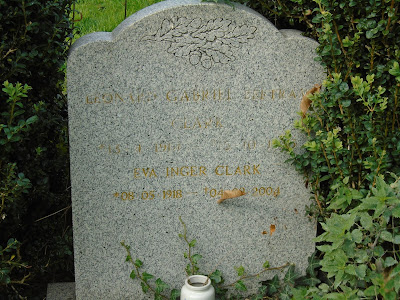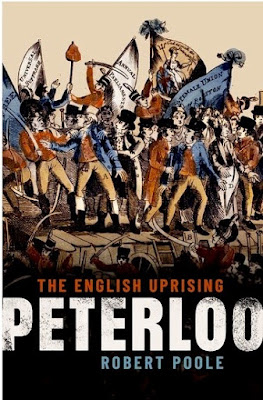Chiang's description of current AI systems as "applied statistics" is a reasonable description of how current systems work. Coldewey agrees with Chiang that "what these systems do is definitely closer to calculators than brains", but he uses the more resonant term "imitation intelligence". (1)
Chiang made a number of points which should be obvious when we think about it but probably are not
1) machines are not conscious, when humans interact it involves communication between two consciousnesses;
2) we fall into the trap in using anthropomorphic language to describe machines: "learn" "understand "know"
3) chatbots produce "filler text", word sequences that obey the rules of grammar: "blurred imitations of the text they were trained on."
4) because the machine is reconstructing material that is slightly different to what already exists it gives the "impression of comprehension"
5) language without the intention, emotion and purpose that human beings bring to it is meaningless.
I decided to question ChatGBT about the nature of AI, or more specifically to question it about the main criticisms of AI. It produced a list of seven different areas. One of its sub-headings was Lack of Common Sense and Contextual Understanding :
AI systems typically excel in specific narrow domains but struggle with generalization and understanding context. They lack common sense reasoning abilities possessed by humans, which can lead to errors or misinterpretations when faced with unfamiliar situations or ambiguous data. This limitation restricts the broader deployment of AI systems in complex real-world scenarios.
I then asked it to explain the philosophical criticisms of AI. This time it produced six sub-headings of which the first two seemed to me to be most pertinent:
1. Consciousness and Subjective Experience: One major philosophical criticism centers around whether AI systems can truly possess consciousness and subjective experience. Consciousness is a complex phenomenon associated with self-awareness, qualia (subjective sensations), and subjective states of mind. Critics argue that even the most advanced AI systems lack true consciousness and can only simulate or mimic certain aspects of human experience.
2. The Chinese Room Argument: This thought experiment, proposed by philosopher John Searle, challenges the idea that AI systems can genuinely understand or have true intelligence. The argument involves a person who does not understand Chinese being placed in a room with instructions on how to manipulate Chinese symbols to produce appropriate responses. Although the person can generate coherent responses, they still do not understand the meaning of the symbols. Critics argue that AI systems may be analogous to the person in the Chinese room, merely manipulating symbols without genuine understanding.
Now it is impressive that a machine can be trained to trawl through billions of words produced by human beings and come up with coherent responses such as these, and to the lazy among us it may offer a short cut to any subject we wish to learn or write about. But what it does is purely pattern recognition, based on the ingestion of and training on a huge amount of data. One estimate is that had ChatGBT been trained on a single Graphics Processing Unit it would have taken 355 years to complete.(2)
Turing, Polanyi and the Epistemology of AI
Alan Turing, a Manchester hero who has appeared a few times on this blog, is often regarded as the founder of artificial intelligence. His famous test for a thinking machine was whether such a machine would be able to converse with a person without that person detecting that he/she was conversing with a machine. Clearly that test still has not been met. But apart from that, Turing's knowledge of philosophy, and particularly epistemology was poor, and his concept of an intelligent machine seems to me to be rather crude.
One of Turing's friends at Manchester University, Michael Polanyi, a polytmath who began as a chemist and ended as a professor of philosophy, challenged Turing's rule-based conception of human knowledge. Polanyi emphasised the tacit nature of much of our knowledge, and questioned the claims of empirical science(3). His work was in some ways a precursor to that of Kuhn's Structure of Scientific Revolutions, which introduced the concept of scientific paradigms.(4)
Nicholas Harrington, writing from a Quantum AI perspective, questioned ChatGBT about Kuhn and related matters of consciousness and epistemology and concluded that, "chatbot is like the goldfish in the bowl. It doesn't realise its swimming in water and assumes the figures that approach at feeding time really do bend and morph as they get closer." Or to put it another way,
Chatbot is ignorant of its presuppositions, considers its position a natural and Archimedean point, and reduces alternative perspectives to the status of subjective interpretation."So he concludes that he is not worried that AI will "suddenly become self aware and take us into some spectacular new future that we couldn't possibly have imagined" and "it falls foul of the same epistemic myopia common among human beings." (5)
To see current AI technology as even close to machines supplanting homo sapiens is nonsense, but it does of course pose a threat to the livelihoods of many. One strange recent example I have heard about is that funding bids for charities has increased greatly this year because ChatGBT has speeded up the production of bids by time-challenged charity fund raisers. Doubtless we shall hear further examples of this.
So in conclusion for me the real worry about what is currently regarded as AI is the economic disruption it will bring and the fear that it will reinforce current trends to inequality. As for Quantum AI, and how you build uncertainty into computer modelling, I will leave that to the experts. It is way beyong my ken.
------------------------------------------------------------------
1. Age of AI: Everything you need to know about artificial intelligence Devin Coldewey, TechCrunch+
2. Chat GBT Statistics (2023) - The Key Facts and Figures Style Factory.
3. M. Polanyi, "Science: Observation and Belief." Humanitas Vol 1, No 3, February 1947. See also Bernard Goncalves "Can Machines Think? The Controversy that led to the Turing Test 1946-50".
4. Thomas S. Kuhn, The Structure of Scientific Revolutions (Chicago, 1962)
5. Nicholas Harrington, "The Epistemology of AI" Project Q - Peace and Security in the Quantum Age




































